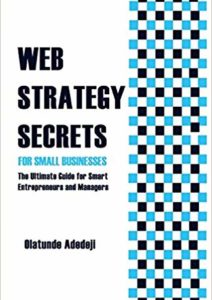No doubt every small business desires a constant inflow of value consuming customers. While this is great for any business success, it also keeps most business executives in a rat race. As a small business owner, maintaining a steady cash flow was most important to me. I had thought the only way to remain in business was to constantly gain new customers. With my team, we spent a great deal of time developing strategy on acquiring more customers than managing the existing ones.
At a point, we discovered we had lost over 28% of existing customers due to poor customer retention strategy. We were losing at higher rate than we were gaining new clients. We also thought customer management solutions were the exclusive rights of big enterprise. We held back and always waited for customer’s distress calls that never came. Many salespeople are culpable of this wrong assumption that more paying customers equal higher revenues.
The above assertion is not necessarily true. As a matter of fact, smart businesses don’t chase new customers at the expense of keeping existing customers. There is a popular held belief that it is 5-6 times more expensive to sell to new customers than existing customers.
According to Gartner Group, 80% of future revenue will come from just 20% of your existing clients. The low hanging fruits are easier to take down. More than ever before, customer relationship management is critical to the continued survival of any business.
Interestingly, most startups fear they might soon shut down if they are not winning new customers, generating more leads and closing sales. The naysayers around us are not helping matters with constant reminder that over 50% of small businesses fail in the first year, and 95% fail within the first five years. While statistics are good for what they are, they shouldn’t keep us in a perpetual panic state that makes us lose sight on the essentials to long-term business success.
Customer relationship management solutions are an approach business use to managing interactions with current and future customers. It often involves using technology to organize, automate, and synchronize sales, marketing, customer service, and technical support. Simply put, it is a holistic solution suite to get the customer to move through your sales cycle again and again. Sweet repeat sales come from satisfied existing customers only. And when you experience more of this, you spend less time hunting for new customers.
CRM and other analytics have opened our eyes to the importance of valuable customer data to increasing profitability. What a CRM can do to your business is that you are able to navigate through the complexity of consumer behaviours and their ever changing needs. Your marketing and sales team will be constantly a step ahead of consumers needs with the right solutions.
There are three possible ways you can increase your business revenue with a CRM;
- Sustained communications
- Upsell and Cross-Sell Strategy
- Leverage on Customer Purchases and Promotion History
Sustained communications
This might sound too obvious, but truly I am believer of this cliché “out of sight is out of mind”. The longer you stay off communicating with your existing customers the less likely you are to get them buy from you. CRM helps to sustain your business relationship with your customers in a way that keep them coming back for your products and services. With your customers’ details at your disposal, you are able to maintain their relationship, provide useful information, and they pay you back with repeat purchases.
Upsell and Cross-Sell Strategy
Most e-commerce platforms are pretty good at product recommendations based on our previous buy or interests. With your CRM harboring useful information about your existing customers and prospects, you can employ this sales strategy.
Upsell is when salesperson is trying to sell complementary products or services, and even at higher value and cost. For instance, there was a recent announcement of Pipeliner CRM Version 10.0 — Collection, latest upgrade of their CRM Solution. It is expected to deliver more values than previous versions.
While in cross-selling, a salesperson is persuading customers to spend more money by buying additional products from other categories. For instance, sneaker laces will be cross-sold to a customer buying pairs of sneakers.
The primary aim of Upsell and cross-sell is to make more revenue. Availability of a CRM data makes this easier.
Leverage on Customer Purchases and Promotion History
Deeper knowledge of your customers buying history is a powerful insight into how they might buy from you in the future. Their purchase frequency and other spending habits can help you in the kind of sales promo you toss at them.
Ceteri paribus, a customer who has purchased a similar product to the one currently in promotion will be more likely to order than a customer who has never purchased a similar product before.
In conclusion, gaining new customers and managing relationships with the existing customers to drive more revenues should go tightly hand-in-hand. When you are at a cross-road to which one should take more of your organization resources; I strongly believe it is easier to sell to a satisfied customer than a new prospect.











